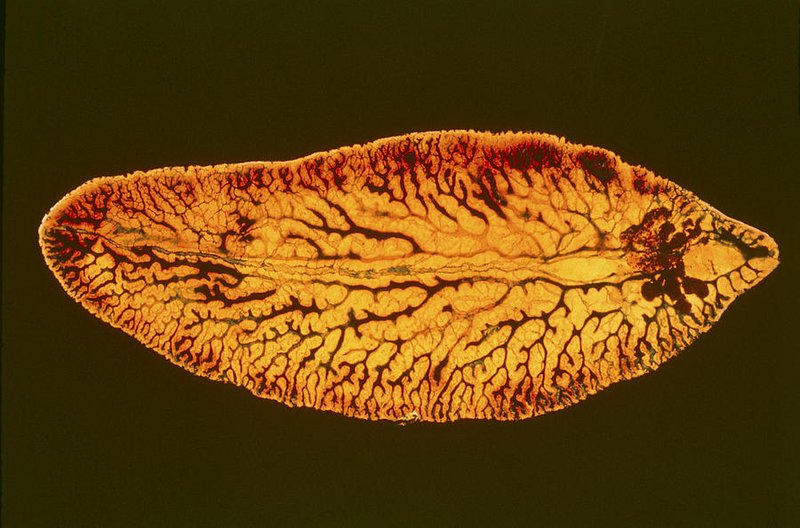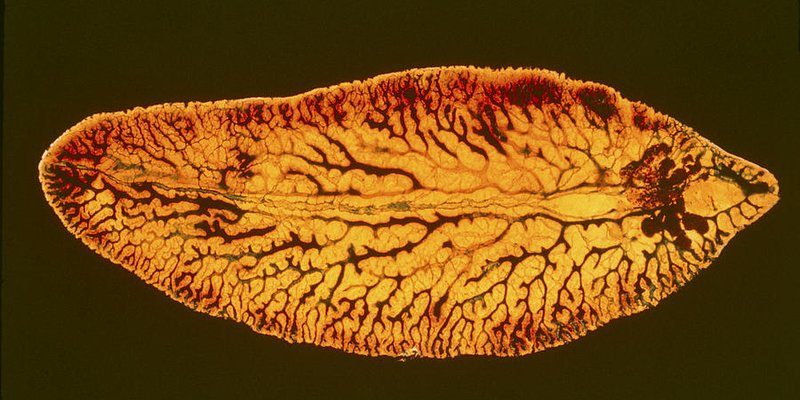
This isn’t just an academic exercise; it matters because understanding our environment can help us protect it. Just like how we might use a barometer to gauge weather changes, scientists use liver flukes to monitor changes in environmental health. So, how exactly does a tiny parasite contribute to big-picture environmental monitoring? Let’s dive into the fascinating world of liver flukes.
What are Liver Flukes?
Liver flukes are flatworms belonging to the class Trematoda, and they primarily inhabit the liver of their hosts, which can include sheep, cattle, and even humans. Imagine them as tiny passengers living in a much larger organism, relying on it for survival. The most common species affecting livestock is *Fasciola hepatica*, also known as the common liver fluke.
These flukes have a complex life cycle that involves multiple hosts. Initially, their eggs are excreted in the host’s feces into water, where they hatch into larvae. They then infect snails, multiply within them, and eventually leave to infect larger hosts. This life cycle can be disturbed by environmental factors, making liver flukes reliable indicators of their surroundings.
Liver flukes can tolerate a range of environmental conditions, but they thrive in specific situations. For instance, they prefer wet, marshy areas where their snail hosts can flourish. That makes them sensitive to changes in their ecosystem, which is what researchers like to tap into for environmental monitoring. So, this little worm serves as a barometer—not just for its own kind but for the health of its larger habitat.
How Liver Flukes Indicate Environmental Changes
Here’s the thing: liver flukes can tell us a lot about water quality and ecosystem health. Their presence or absence can signal changes in the environment, making them valuable tools for researchers. When researchers find an abundance of liver flukes, it can indicate that the conditions are right for their lifecycle to flourish—typically meaning there’s plenty of moisture and sufficient hosts.
But it’s not just about numbers; liver flukes can also indicate pollution levels. As they live and feed in their environment, they absorb contaminants, such as heavy metals or chemicals, which can then be traced back to their habitat. This bioaccumulation of toxins means that by studying these flukes, scientists can gauge how clean or polluted an area is.
In areas heavily affected by agriculture, for example, liver flukes can provide vital clues about the impacts of fertilizers and pesticides on local ecosystems. If their populations explode in areas where those chemicals are used, it might highlight potential ecological imbalances worth investigating. Knowledge like this is crucial for informing regulatory practices and ensuring a balanced environment.
Benefits of Using Liver Flukes for Monitoring
So, why use liver flukes instead of other methods of environmental monitoring? There are several compelling reasons:
- Cost-Effective: Studying liver flukes can be less expensive compared to high-tech monitoring tools like sensors and automated systems.
- Indicator of Health: They provide clear evidence of the broader ecosystem’s health, serving as bioindicators.
- Historical Data: Liver fluke populations can offer historical perspectives on environmental changes over time.
Additionally, liver flukes are relatively easy to sample. Researchers can collect samples from infected hosts with minimal disturbance to the ecosystem. This ease of access means they can gather valuable data quickly, making it practical to monitor environmental health regularly.
Think of using liver flukes as a way of “reading” the environment. Just like a doctor might diagnose a person based on symptoms, scientists can use liver fluke populations to understand what’s going on in an ecosystem.
Challenges in Using Liver Flukes for Bioindication
While liver flukes are helpful, they’re not without their challenges. One of the main difficulties is differentiating the effects of environmental change from other factors influencing fluke populations. For instance, fluctuations in temperature or host availability can affect populations independently of pollution levels.
Moreover, researchers need to ensure that their studies are consistent and accurate. For example, finding flukes in a specific area might point toward health issues, but researchers must ensure that they’re not misinterpreting the data due to other confounding variables.
Also, liver flukes have specific ecological requirements, meaning they can only thrive in certain environments. If their habitat is drastically altered by human activity—such as urban development or heavy pollution—their populations might decline, leading to misleading interpretations about the overall health of the ecosystem. Properly understanding these dynamics requires careful study and a nuanced approach.
Case Studies and Real-World Applications
In practice, the use of liver flukes for environmental monitoring has seen success in various studies. For instance, researchers in New Zealand have utilized liver flukes to assess the environmental impacts of agricultural runoff on freshwater ecosystems. By examining the populations of liver flukes across different sites, scientists could establish links between farming practices and ecosystem health.
Another notable example comes from the UK, where liver flukes have been studied to understand the effects of climate change on animal health. With rising temperatures and changing rainfall patterns, researchers are gathering data on how these changes impact fluke populations among livestock. Their findings could inform farmers about potential risks to animal health and guide better management practices.
These real-world applications underscore the versatility of liver flukes as bioindicators. They not only provide valuable insights into local ecosystems but also raise awareness about broader environmental issues, guiding necessary changes to support sustainability.
The Future of Liver Fluke Monitoring
Looking ahead, the integration of liver flukes into environmental monitoring is likely to grow. As concerns about pollution and biodiversity increase, scientists may rely more on these organisms to offer critical data. New technologies, such as genetic analysis and enhanced sampling methods, could further refine the data obtained from liver flukes, making their findings even more relevant.
Additionally, combining liver fluke monitoring with other bioindicators could provide more comprehensive insights into environmental health. Just like a puzzle, each piece of data helps to complete the picture of what’s happening in an ecosystem.
Collaboration between researchers, policymakers, and local communities will be vital. By combining traditional ecological knowledge with scientific research, we can better use around liver flukes and other bioindicators to protect our environment. It’s an exciting time in environmental science, and liver flukes are at the forefront of this movement.
In conclusion, liver flukes might not be the first thing that comes to mind when you think of environmental monitoring, but they play a crucial role. These tiny organisms can tell us big stories about the health of ecosystems. By understanding how they function and what they indicate, we can better protect our environment for future generations. So next time you hear about liver flukes, remember—they’re not just parasites; they’re essential players in the game of environmental health.

